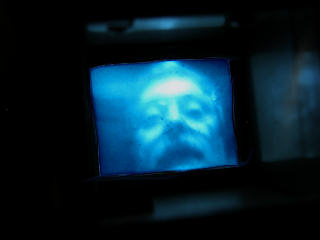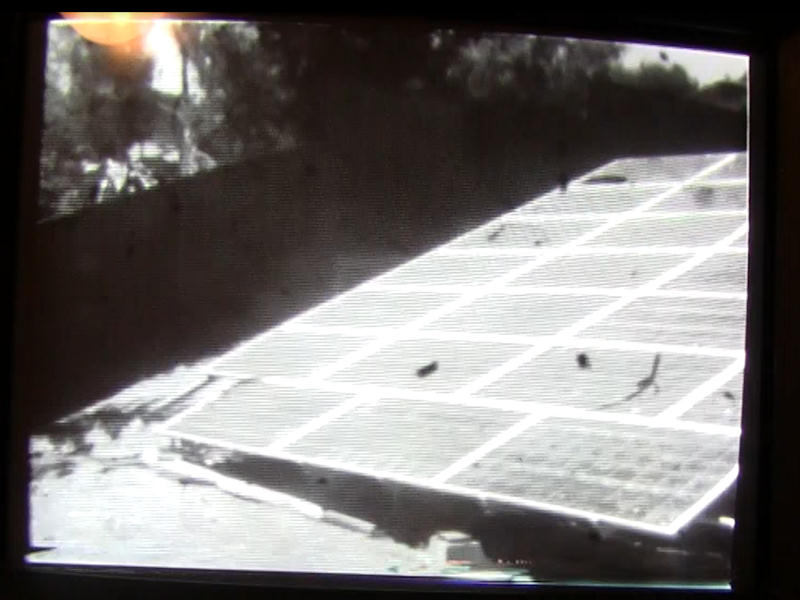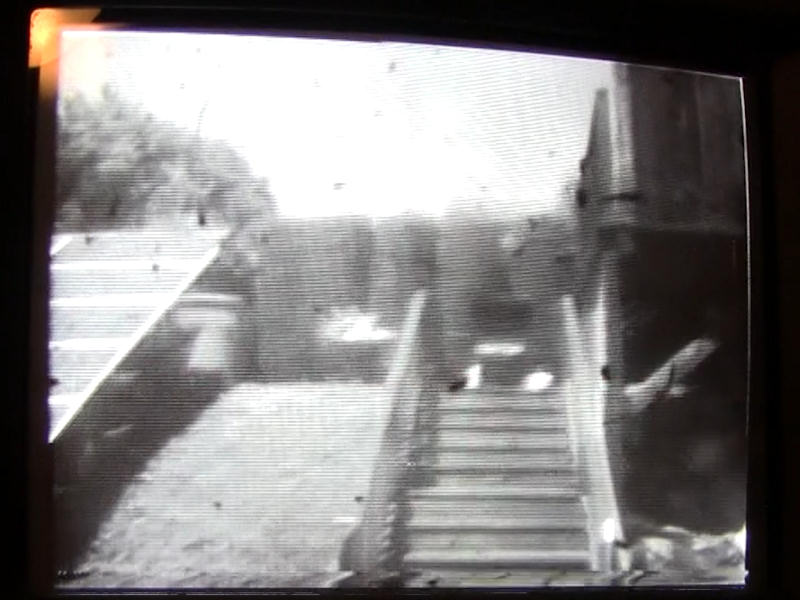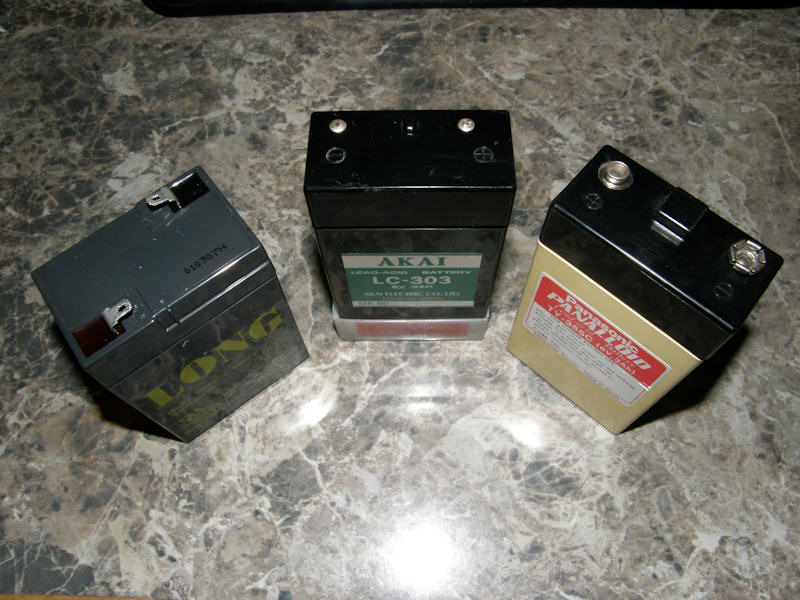|
LabGuy's World: Modern batteries for vintage portapac VTRs - Part 2
PROJECT GOALS: Welcome to part two. The goal is to find solutions to the limitations I have identified in using NiMH batteries so far. Detailed explanation to follow... 
Labguy peers out of the WV-3085 viewfinder and the actual WV-3085 camera. I was finally able to locate an operational WV-3085 camera for testing. I charged up the battery pack and installed it in the VTR. Walked around the back yard taking video of our solar panels and lawn furniture, etc. Did this for about ten minutes. I returned to the lab and continued to record. The battery seemed to die early. Of course, in my excitement, I forgot to keep track of the time. But, I suspect that the battery is not the primary culprit in this case. 

Two screen shots from the recording in my backyard 20130629. So, I put the battery back on the charger and noticed something troubling. The battery reached full charge in only ten minutes. I put the battery back in the recorder with the camera attached. I then placed the system into record and simply let it run. I marked the time. At around 15 minutes, the VTR shut off due to low battery voltage. I was able to run the machine in rewind and fast forward. These functions don't require the electronics to function. Plus, this demonstrated that there was plenty of 'power' left in the battery pack. The output voltage characteristic, along with an internal VTR protection circuit is the issue. The VTR will stop automatically when the battery voltage drops below a preset limit. This is because, the signal and servo electronic circuits will not operate correctly when the source voltage is too low. This battery pack is actually intended for extreme high current operation. Almost in a short circuit mode. In this application, we are pulling around 2 amps of current from a battery that is probably capable of delivering a dozen amps or more for short periods of time without suffering any ill effects. It was designed for model race cars and other high current demand applications where the absolute voltage is not the issue. Unfortunately, the VTR required voltage must be moderately precise within a narrow range. A gel-cell battery, as used orignally, runs over about a two to three volt operating range. That is to say, running from approximately 13 volts down to around 10 volts when fully depleted (of power). Even a 'dead' battery can register a certain amount of voltage. But, under load, it will fail to deliver any 'power'. The NiMH battery pack will produce a lot of current as the voltage goes from 12.6 down to around 6 volts. This is not a usable voltage range for this application. What could the practical solution be? Here are my thoughts on that question. I am thinking of adding some sort of active circuitry to the NiMH battery pack, like a boost-buck regulator for instance. They make these for solar panels where the input voltage can fluctuate over a vast range. A range like 2 to 40 volts! Yet we desire a constant 12 volts at the output. This type of regulator exists and I have located and ordered some samples for testing. They are coming from China. So, the shipping time may be as long as 15 days for the economy postage that I have chosen. To preview some of the devices I will be evaluating, feel free to visit: Pro DC to DC dot com. The prices are incredible! Many interesting off the shelf power converters for all manner of application. And the bonus is that they accept Paypal payments! Win - win! 
Three of dozens of configuration possibilities for SLA (Silica Lead Acid) battery conacts If this NiMH pack fails to produce the desired result, we will examine the possibility of using conventional lead acid batteries external to the VTR. The truth is, it 'might' be possible to locate modern drop in replacement batteries. But, this is never guaranteed. The big difference is always the number of ways one can connect to the battery. Like simple flat contacts, snap connectors like we see on this project, and even pigtail fly leads with various connectors. Each VTR used a unique battery for some unknown reason instead of standardizing the power packs. The batteries are available. The correct contact arrangements we need may not be so easy to find. CURIOSITY POINT: What is a 'Gel Cell' battery? The common description is of a convential lead acid battery with an addative that "gells" the acid to prevent sloshing and splashing. This is accurate as to the desired end result. But, inaccurate as to the actual mechanism. The "gell" part of the cell is simple silica, also known as 'sand'. By putting sand in the cells, the acid is held firmly in a matrix of silica granuals, preventing undesired motion in the acid and keeping the metal plates in constant contact with the electrolyte in any orientation. Also, the sand displaces a significant volume, thuse creating a battery that requires far less acid than a pure 'wet cell' would. I presume that the acid would also leak out slower, as compared to a free liquid battery, should the case become compromised. Clever! TO BE CONTINUED... CHECK BACK SOON FOR FUTURE UPDATES[HOME] [PART 1] [PANASONIC NV-3082] [VIDEO TAPE RECORDERS] Created: June 30, 2013 Last updated: July 1, 2013 |